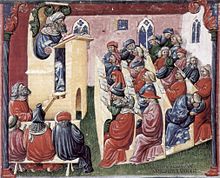Games-based learning and Curriculum for Excellence
Why use computer games as learning tools?
In terms of Curriculum for Excellence it is important that we articulate how computer games can help develop the four capacities.
Successful learners
To develop successful learners the Consolarium argues that computer games can:
· act as a powerful motivational context
· provide powerful contexts for challenging and demanding problem solving
· implicitly develop the science model of enquiry in terms of developing learners ability to observe hypothesise, test, evaluate, conclude and refine ideas
· allow other curricular areas to be explored, enriched and excited by using the context within the game or by using the game as a context to jump into the more traditional curriculum
· provide contexts in which metacognitive awareness and development are essential for success. This means that the player must think about their thinking and understand they are a complex individual who can develop an awareness of how they think and learn and in so doing become an equal partner with the ‘more informed teacher’ in terms of the learning relationship.
Confident individuals
To develop confident individuals the Consolarium argues that computer games can:
· allow learners to engage with resources, cultural artefacts and worlds that have meaning for them
· allow collaborative communities to be established in which learners can play/learn together through the connected nature of modern games consoles and handheld devices
· help create contexts in which formative assessment can flourish
· allow learners to personalise much of the graphical interface and their online collaborative personas
· foster and encourage learners’ self-esteem and self-determination
Responsible citizens
To develop responsible citizens the Consolarium argues that computer games can:
· help establish communities in which learners develop a sense of ownership and belonging
· engage learners with complex worlds that require them to look at the wider facts and issues before they make informed choices.
Effective contributors
To develop effective contributors the Consolarium argues that computer games can:
· encourage and develop attitudes to and skills in enterprise through simulated environments and collaborative contexts
· develop self-reliance and self-determination in terms of a learners ability to make progress within a demanding but incrementally staged environment
· encourage learners to appreciate that the skills necessary for success in games such as problem solving and critical thinking can have relevance in other curricular areas and other social contexts such as study or work
· create an implicit and explicit understanding that as a learner on our own we can be good but as a learner in a connected team we can be much better.













